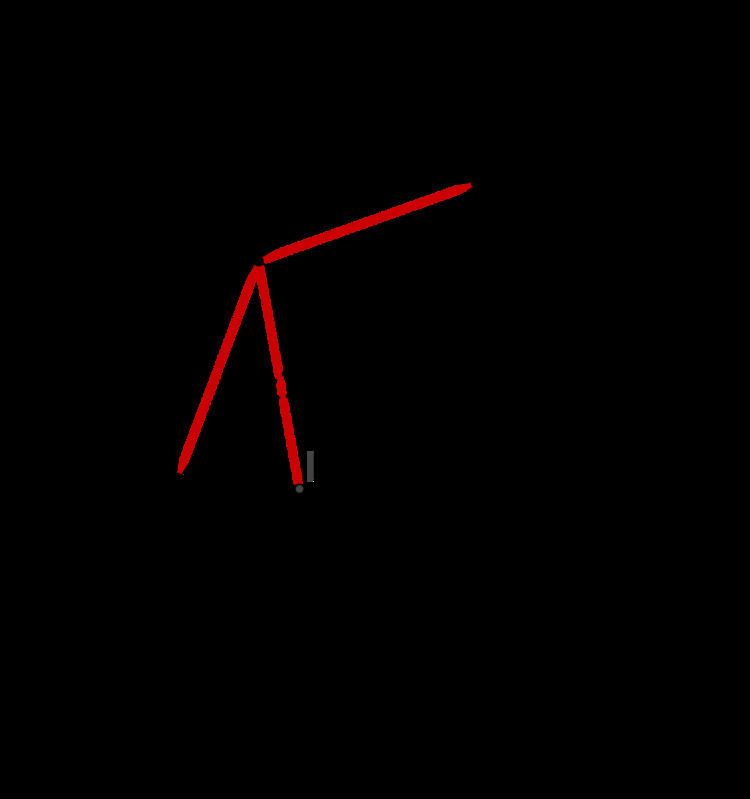 | ||
In Euclidean geometry, the trillium theorem – (from Russian: лемма о трезубце, literally 'lemma about trident', Russian: теорема трилистника, literally 'theorem of trillium' or 'theorem of trefoil') is a statement about properties of inscribed and circumscribed circles and their relations.
Contents
Theorem
Let ABC be an arbitrary triangle. Let I be its incenter and let D be the point where line BI (the angle bisector of ∠ABC) crosses the circumcircle of ABC. Then, the theorem states that D is equidistant from A, C, and I. Equivalently:
A fourth point, the excenter of ABC relative to B, also lies at the same distance from D, diametrally opposite from I.
Proof
By the inscribed angle theorem,
Since
Application to triangle reconstruction
This theorem can be used to reconstruct a triangle starting from the locations only of one vertex, the incenter, and the circumcenter of the triangle. For, let B be the given vertex, I be the incenter, and O be the circumcenter. This information allows the successive construction of:
However, for some triples of points B, I, and O, this construction may fail, either because line IB is tangent to the circumcircle or because the two circles do not have two crossing points. It may also produce a triangle for which the given point I is an excenter rather than the incenter. In these cases, there can be no triangle having B as vertex, I as incenter, and O as circumcenter.
Other triangle reconstruction problems, such as the reconstruction of a triangle from a vertex, incenter, and center of its nine-point circle, can be solved by reducing the problem to the case of a vertex, incenter, and circumcenter.
Generalization
Let I and J be any two of the four points given by the incenter and the three excenters of a triangle ABC. Then I and J are collinear with one of the three triangle vertices. The circle with IJ as diameter passes through the other two vertices and is centered on the circumcircle of ABC. When one of I or J is the incenter, this is the trillium theorem, with line IJ as the (internal) angle bisector of one of the triangle's angles. However, it is also true when I and J are both excenters; in this case, line IJ is the external angle bisector of one of the triangle's angles.
